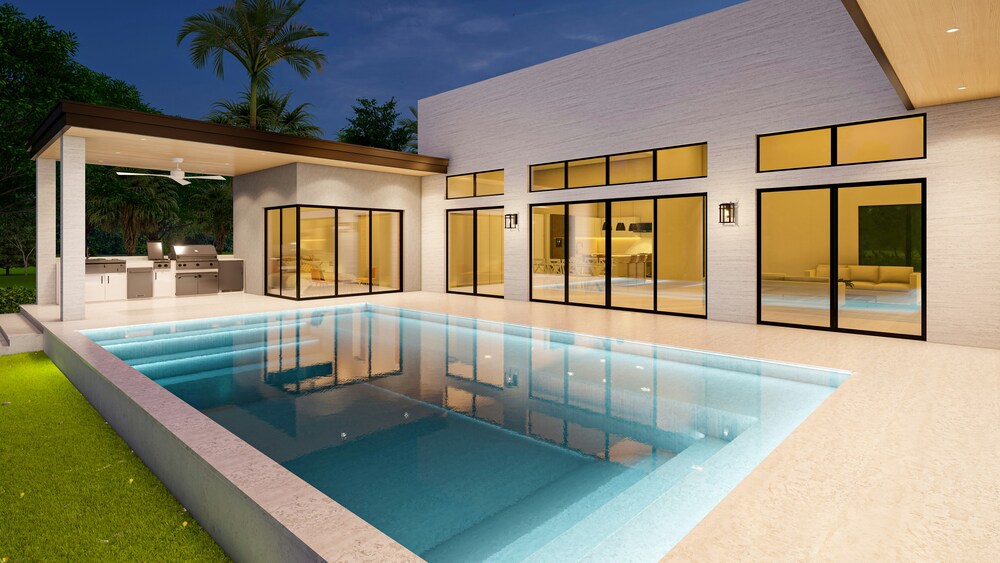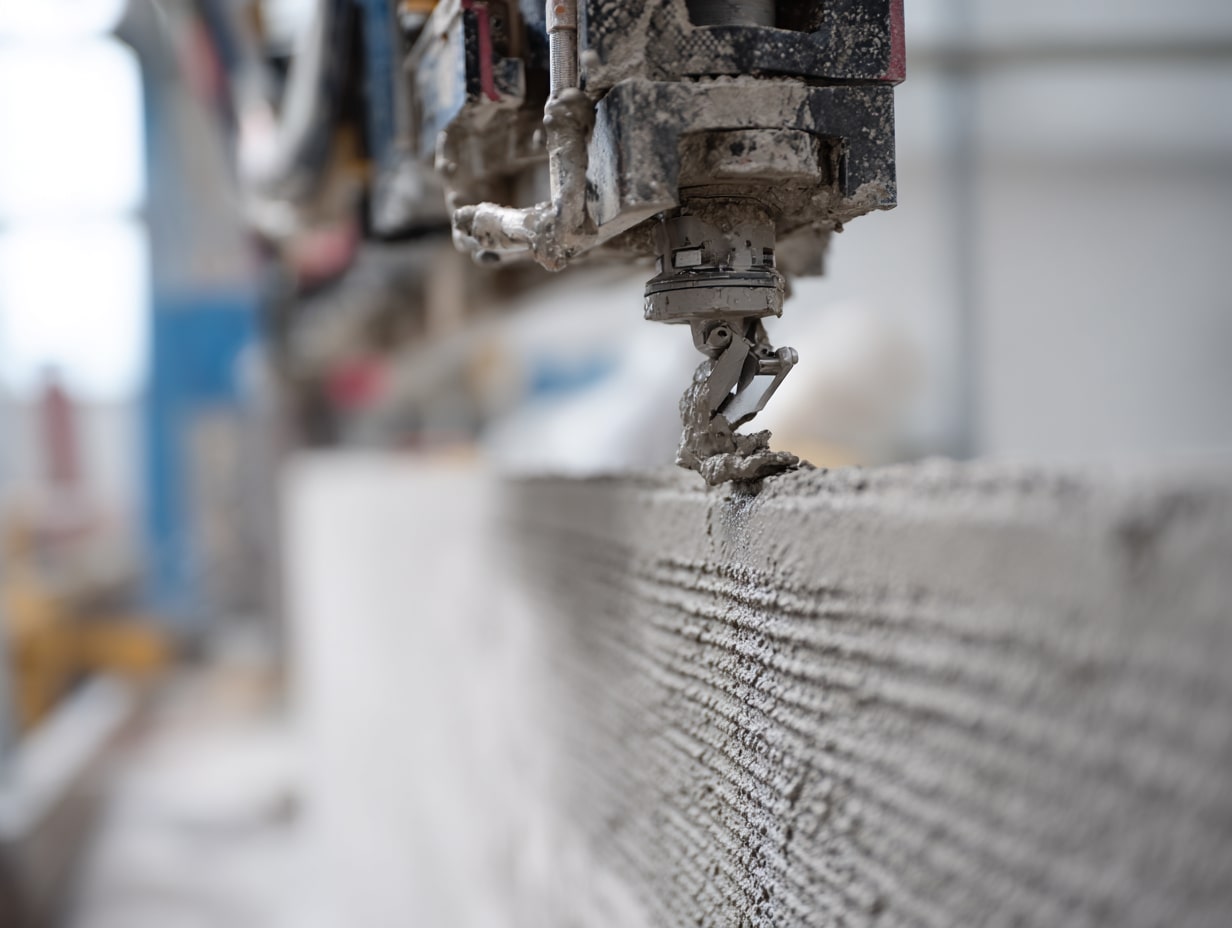- Home
- Articles
- Architectural Portfolio
- Architectral Presentation
- Inspirational Stories
- Architecture News
- Visualization
- BIM Industry
- Facade Design
- Parametric Design
- Career
- Landscape Architecture
- Construction
- Artificial Intelligence
- Sketching
- Design Softwares
- Diagrams
- Writing
- Architectural Tips
- Sustainability
- Courses
- Concept
- Technology
- History & Heritage
- Future of Architecture
- Guides & How-To
- Art & Culture
- Projects
- Interior Design
- Competitions
- Jobs
- Store
- Tools
- More
- Home
- Articles
- Architectural Portfolio
- Architectral Presentation
- Inspirational Stories
- Architecture News
- Visualization
- BIM Industry
- Facade Design
- Parametric Design
- Career
- Landscape Architecture
- Construction
- Artificial Intelligence
- Sketching
- Design Softwares
- Diagrams
- Writing
- Architectural Tips
- Sustainability
- Courses
- Concept
- Technology
- History & Heritage
- Future of Architecture
- Guides & How-To
- Art & Culture
- Projects
- Interior Design
- Competitions
- Jobs
- Store
- Tools
- More

If you’re exploring the world of 3D animation, game development, or digital content creation, you’ve likely encountered the term “rigged” when browsing 3dexport.com or other platforms. Understanding what rigged means in 3D models is crucial for anyone working with animated characters, creatures, or even mechanical objects. This comprehensive guide will explain rigging in detail and help you determine when you need rigged models for your projects.
Table of Contents
ToggleUnderstanding 3D Model Rigging: The Basics
Rigging is the process of creating a digital skeleton (called a “rig”) for a 3D model that allows it to be posed and animated. Think of it like a puppet system—just as a puppeteer uses strings to control a marionette, animators use rigs to control 3D characters. The concept might sound complex at first, but it’s actually quite intuitive once you understand the fundamental principle: you’re essentially building an internal structure that gives the model the ability to move naturally.
A rigged 3D model contains two main components working in harmony. The mesh is the visible geometry—the skin, clothing, and surface details that you actually see when viewing the model. The armature or skeleton is an invisible internal structure made up of bones and joints that controls how the mesh deforms and moves. When properly rigged, you can manipulate the bones to create realistic movements, and the mesh will deform naturally to follow those movements. Muscles flex, clothing wrinkles, and joints bend in ways that mimic real-world physics and anatomy.
Why Rigging Matters in 3D Production
Without rigging, animating a 3D character would be nearly impossible in any practical sense. You’d have to manually move every single vertex (point) on the model for each frame of animation, which could mean adjusting thousands or even millions of points just to make a character take a single step. Rigging solves this problem by creating a control system that allows animators to manipulate the entire model using a relatively small number of control points.
In animation production, rigged models enable artists to create walking, running, and jumping animations with natural movement that would otherwise take exponentially longer to produce. They allow you to pose characters for still images with proper weight distribution, ensuring that a character standing on one leg looks believably balanced. Facial bones enable the creation of expressions ranging from subtle smiles to exaggerated cartoon reactions. Complex actions like fighting sequences, dancing, or characters performing intricate tasks all become possible through sophisticated rigging systems.

The true power of rigging becomes apparent in game development, where real-time performance is crucial. Game engines like Unity, Unreal Engine, and Godot require rigged characters to respond to player input with fluid movement. The rig allows the game engine to blend between different animation states smoothly—transitioning from idle to walking to running without jarring jumps. Modern game rigs support inverse kinematics for realistic foot placement on uneven terrain and hand interactions with objects, enable procedural animation systems that respond dynamically to gameplay, and implement ragdoll physics for realistic reactions when characters are hit or fall.
Professional animation studios working on films and commercials rely heavily on sophisticated rigs that represent the cutting edge of the technology. High-end character rigs might include hundreds of control points for nuanced facial expressions capable of capturing the full range of human emotion. They incorporate muscle systems that simulate realistic tissue deformation as a character moves, making digital characters virtually indistinguishable from real actors. Secondary animation controls handle hair, clothing, and accessories that move independently but naturally in response to the character’s primary motion. Custom controls address specific character features or mechanical elements unique to that design.
Types of 3D Model Rigs
Basic skeleton rigs represent the simplest approach to character rigging and consist of a hierarchical bone structure that mimics a real skeleton. These work well for background characters that need simple movements without the complexity of hero character animation. They’re ideal for prototype animations and previsualization work where the focus is on timing and staging rather than performance quality. Basic rigs help students and newcomers learn animation fundamentals without being overwhelmed by complex control systems, and they’re perfect for mobile games requiring optimized performance where every bone adds computational overhead.

A basic rig typically includes spine bones for torso movement, limb bones connecting shoulders to hands and hips to feet, and a simple head control. They’re relatively quick to set up and easy to animate, though they offer limited control over subtle movements and fine details. The simplicity is both their strength and limitation—you can get a character moving quickly, but you won’t achieve the nuanced performances possible with more sophisticated systems.
Advanced character rigs feature sophisticated control systems that give animators precise control over every aspect of movement. These rigs typically combine multiple control methods to give animators flexibility in their approach. Forward Kinematics controls work like real joints, where rotating the shoulder affects the elbow, which in turn affects the wrist. This approach feels intuitive for creating overlapping actions and natural movement where different parts of the body move at different times, creating the fluid motion characteristic of good animation.
Inverse Kinematics controls flip this relationship, allowing you to position the hand or foot where you want it, and the system automatically calculates how the rest of the limb should bend to reach that position. This becomes essential when characters need to interact with objects or environments—placing a hand on a doorknob, feet on stairs, or maintaining contact with a surface while other parts of the body move. Professional rigs often include both FK and IK controls for the same limb, allowing animators to switch between them or blend their influence depending on what works best for a particular shot.
Blend shapes or morph targets enable facial animation by smoothly transitioning between predefined expressions. A character might have dozens or even hundreds of these for nuanced performance, with separate controls for raising eyebrows, curling lips, inflating cheeks, and countless other facial movements. When combined skillfully, these simple controls can create performances of remarkable subtlety and emotional depth.
Facial rigging deserves special attention as it’s become a specialized field within character rigging. The human face is extraordinarily expressive, capable of conveying complex emotions through tiny movements that we’re evolutionarily programmed to notice. A professional facial rig captures this complexity through an intricate system of controls. Jaw and mouth rigs enable dialogue animation and eating behaviors, with controls for opening the jaw, pursing the lips, and shaping the mouth for different phonemes. Eye rigs include look-at targets that automatically rotate the eyes to watch a specific object, along with blink controls and pupil dilation. Eyebrows and forehead controls express emotions from surprise to anger to concern. Cheek and nose controls add supporting movements that make expressions feel genuine rather than posed. Even ears and neck tension contribute to the overall expressiveness, with subtle movements that subconsciously register with viewers as authentic.
High-end facial rigs used in feature film production can have over two hundred control points to capture the full range of human expression. These rigs enable the digital actors in modern films to deliver performances that rival live-action cinema in emotional impact.
Not all rigs are for organic characters—mechanical rigging is equally important for vehicles, robots, and animated props. Vehicles need rigs for wheels that rotate at speeds matching the vehicle’s movement, suspension systems that compress when hitting bumps, and countless moving parts from engine pistons to opening doors. Robot rigs simulate hydraulics and articulated joints with the characteristic mechanical precision of artificial movement. Props with moving components like doors, drawers, or weapons need carefully designed rigs to ensure smooth, realistic operation. Even architectural elements benefit from rigging when windows need to open, bridges need to deploy, or buildings need to transform.

The Technical Process of Rigging
Understanding the rigging process helps you appreciate why rigged models are more valuable and often more expensive than static meshes. Creating a professional rig is a time-intensive process requiring both technical knowledge and artistic sensibility.
Riggers start by creating the bone structure, carefully placing bones within the 3D model at anatomically correct locations. The bone hierarchy is crucial because parent-child relationships determine how movement propagates through the skeleton. A shoulder bone must be the parent of the upper arm, which parents the forearm, which parents the hand. This hierarchy ensures that when you rotate the shoulder, the entire arm moves with it, but rotating the hand only affects the hand itself. For a standard humanoid character, you’ll typically find a root bone for overall positioning, several spine bones providing torso flexibility, neck and head bones for upper body articulation, three to four bones per arm from shoulder to fingertips, four to five bones per leg from hip to toes, and multiple bones per finger for expressive hand animation.
Weight painting and skinning represent the crucial step that determines how the mesh deforms when bones move. Each vertex of the mesh is assigned “weights” indicating how much it should be influenced by nearby bones. A vertex at the elbow, for example, might be influenced fifty percent by the upper arm bone and fifty percent by the forearm bone, creating a smooth bend when the elbow rotates. Proper weight painting ensures smooth deformation at joints without ugly creasing or pinching, realistic muscle bulging and compression as limbs bend and straighten, natural cloth folding and stretching in response to body movement, and avoidance of impossible shapes or self-intersection where the mesh collides with itself.
This process is often the most time-consuming part of rigging, requiring artistic judgment and technical precision. The rigger must paint weights vertex by vertex in problem areas, constantly testing how the deformation looks during movement and making subtle adjustments. A professional rigger might spend days on weight painting alone for a single character, ensuring that every possible pose looks good without geometric artifacts.
Creating control rigs adds the user interface that animators will actually interact with. Professional rigs include custom controllers—visible handles that animators use to manipulate the character rather than selecting bones directly. These controllers might be simple geometric shapes like circles, squares, or arrows positioned for easy selection. They’re often color-coded for different body sections, with blue for the left side, red for the right, and yellow for center controls. Good controllers are positioned away from the character mesh where they’re easy to select without accidentally clicking the geometry instead.
Setting up constraints adds intelligent behavior that makes the rig both more powerful and more intuitive to use. Pole vector constraints keep knees and elbows bending in the correct direction rather than flipping unpredictably. Aim constraints make eyes track targets automatically, maintaining eye contact as characters move. Copy constraints allow symmetrical movement for actions like raising both arms simultaneously. Limit constraints prevent unnatural joint rotation, ensuring that elbows don’t bend backward or heads don’t rotate completely around.

How to Use Rigged 3D Models
When you acquire a rigged model for your project, understanding how to work with it effectively can mean the difference between smooth production and frustrating technical struggles. The animation workflow typically begins with importing the model into your animation software, whether that’s Maya, Blender, 3ds Max, Cinema 4D, or another package. The first step is always familiarizing yourself with the controls by examining the rig structure and testing how different controllers affect the model. Professional rigs often include documentation explaining the control scheme, but even without documentation, a well-designed rig should be relatively intuitive to explore.
Setting keyframes forms the foundation of animation, where you pose the character at key moments in your animation and let the software interpolate the movement between those poses. The art of animation lies in choosing which moments to keyframe and how to time them. Refining timing involves adjusting the spacing between keyframes and manipulating animation curves to create different qualities of movement—smooth and flowing for graceful actions, sharp and snappy for energetic movements. Adding secondary motion brings life to the animation through overlapping action where different parts of the body move at different rates, hair and clothing that trail behind primary movements, and subtle details like breathing and weight shifts during idle moments.
Game engines handle rigged models somewhat differently than animation software because they need to work in real-time with dynamic situations that can’t be predicted in advance. After importing the rigged model with its animations, you’ll set up an animation controller to manage transitions between different animation states—blending from idle to walk when the player presses forward, transitioning to a jump animation when they press the jump button. You’ll configure collision detection for the character’s hitboxes and optimize bone counts if needed for performance on target platforms. Some games implement inverse kinematics at runtime for adjustments like foot placement on uneven terrain, ensuring characters maintain believable contact with the ground even on irregular surfaces.
Different software and engines use various file formats for rigged models, and understanding these formats helps ensure smooth workflows. FBX has become the industry standard for transferring rigged models between software packages because it preserves bones, skinning, and animations while being supported by virtually every major 3D application and game engine. Collada (DAE) serves as an open format supporting rigs and animations, commonly used in game development, particularly for mobile platforms. Alembic stores baked animation data, useful for complex simulations or visual effects work, though it doesn’t preserve the rig structure for further editing. Blend files contain native Blender data including sophisticated rigs with all custom controls and Python scripts intact. Maya’s MB and MA files preserve all rigging data and custom MEL scripts but only work within the Maya ecosystem.
Rigged vs. Non-Rigged Models: Making the Right Choice
Choosing between rigged and non-rigged models depends entirely on your project requirements and workflow. Rigged models become essential when you’re creating any animated content with moving characters or creatures, regardless of whether it’s a feature film, a YouTube video, or a student project. Game development with controllable characters absolutely requires rigged models because players expect responsive, fluid movement in response to their inputs. Cinematic sequences with character performances need rigging to convey emotion and tell stories through movement. Interactive experiences like virtual reality applications or interactive installations require responsive avatars that can react to user actions. If you’re working on multiple projects that can reuse the same character with different animations, investing in a quality rigged model pays dividends across your entire body of work.
Static models work better for projects where animation isn’t required. Architectural visualization with non-moving objects has no need for rigging—you’re showing buildings, furniture, and environments that remain stationary. Product renders and marketing materials typically show products from various angles but without animation. Background elements in scenes that never animate don’t benefit from rigging and the additional file size rigging adds unnecessarily. Three-dimensional printing projects specifically need static geometry without any rigging data. Concept art and illustration where you’ll manually pose elements in 2D doesn’t require the overhead of full rigging systems.

Finding Quality Rigged Models
Creating a professional rig from scratch can take days or even weeks of specialized work, making pre-rigged 3d models an attractive option for many projects. The time investment required to build a sophisticated rig makes buying quality pre-rigged characters economically sensible for most productions unless you have very specific requirements that generic models can’t meet.
When evaluating rigged models from marketplaces or asset libraries, several quality indicators help separate professional-grade assets from amateur work. Documentation that explains the rig’s features and controls signals that the creator has thought about the end user experience. Quality providers include rig guides, control sheets showing all available controls, or demo videos demonstrating the rig’s capabilities and range of motion. For game-ready models, multiple LODs (Levels of Detail) allow performance optimization by using simpler geometry when characters are far from the camera.
Clean topology with appropriate polygon density indicates a model designed specifically for animation rather than just being a static model with bones added as an afterthought. Animation-quality models need clean edge flow around joints where the geometry will deform, with edge loops circling areas of deformation to prevent pinching and distortion. Standard bone naming following industry conventions makes it much easier to retarget animations from one character to another or to use motion capture data without extensive manual cleanup. Compatible formats for your specific software and workflow prevent time-consuming conversion issues that can break rigging data. Preview animations demonstrating various actions show that the rig has been tested and works properly across a range of poses and movements. Clear licensing specifying usage rights for commercial projects, games, or films prevents legal complications down the road.
Advanced Rigging Concepts
Modern rigging has evolved significantly beyond simply connecting bones to geometry. Auto-rigging tools have emerged that can generate basic rigs automatically, dramatically reducing setup time for standard character types. Mixamo offers free automatic rigging and animation through a web interface where you simply upload a character model and receive a rigged version minutes later, complete with a library of animations you can apply. Blender’s Rigify addon generates sophisticated rigs from a few placement bones, creating controls for facial animation, fingers, and complex spine systems automatically. Maya includes HumanIK for quick character setup compatible with motion capture data. AccuRig and similar services provide AI-powered automatic rigging that analyzes your character’s geometry to determine optimal bone placement.
While these automated solutions are incredibly convenient and work well for background characters or rapid prototyping, they often lack the refinement of hand-crafted rigs for hero characters who will be featured prominently. The difference becomes apparent in extreme poses or close-up shots where custom weight painting and specialized controls make the difference between acceptable and exceptional.
Motion capture compatibility has become increasingly important as mocap technology has become more accessible. Professional rigged models designed for motion capture work feature standard skeleton proportions that match typical mocap actor dimensions, bone naming that follows motion capture conventions like the ones established by motion capture hardware manufacturers, built-in retargeting capabilities that adapt mocap data to characters of different proportions, and optional inverse kinematics setups for ground contact refinement to prevent feet from sliding or floating.
Procedural rigging represents the cutting edge of character setup technology, using algorithms and simulations to automate aspects that previously required manual keyframing. Advanced systems generate muscle deformation automatically based on bone movement, bulging and flexing in anatomically correct ways without the animator explicitly controlling these details. Cloth and soft-body dynamics simulate in real-time, making clothing and hair respond naturally to character movement without hand-animated secondary motion. Breathing and idle movements can be generated procedurally, preventing the lifeless stillness that makes digital characters feel artificial during quiet moments. Some procedural systems can even adapt rigs to different character proportions automatically, allowing a single animation to be applied to characters of vastly different sizes while maintaining natural-looking movement.
Troubleshooting Common Rigging Issues
Working with rigged models inevitably means encountering technical problems that need solving. Mesh explosions where geometry stretches uncontrollably across the scene usually result from incorrect weight painting or missing bone influences. A vertex without any bone weights or accidentally assigned to the wrong bone can shoot off to infinity when animations play. The solution involves careful review of weight painting, ensuring every vertex has appropriate bone influences summing to exactly one hundred percent.

Gimbal lock causes frustrating situations where rotation channels align and create unpredictable rotation behavior, making it impossible to achieve certain orientations without the controller flipping unexpectedly. This mathematical limitation of Euler angle rotation can be solved by using quaternion rotation mode instead, though this requires understanding how quaternions work differently from the intuitive XYZ rotation most artists are familiar with.
Rig incompatibility issues arise when trying to use a model created in one software package within a different application. Even when using supposedly universal formats like FBX, subtle differences in how different programs interpret the format can cause problems. Careful attention to export settings helps, specifying compatible versions of file formats and ensuring all necessary data is included. Sometimes partial rig rebuilding becomes necessary to translate concepts from one software package’s rigging system to another’s different approach.
Performance problems in game engines often stem from overly complex rigs with too many bones or computationally expensive constraints. Game engines have strict performance budgets, and every bone adds to the per-frame calculation cost. Optimization might involve reducing bone counts through merging or removing bones that contribute minimally to the final animation, baking constraints into simpler setups, or using lower detail rigs for distant characters through level-of-detail systems.
Animation artifacts like joint flipping where a knee or elbow suddenly pops to face the wrong direction, or unnatural deformation where geometry pinches or bulges incorrectly, require careful diagnosis. Joint flipping often results from improper pole vector setup or IK solver configuration. Deformation problems usually trace back to weight painting issues that need adjustment or sometimes corrective blend shapes that activate at specific joint angles to sculpt the mesh into a more natural shape.

Conclusion
Understanding what rigged means in 3D models opens the door to bringing static geometry to life through animation and interactive experiences. Rigging transforms frozen digital sculptures into living, breathing characters capable of expressing emotion, performing complex actions, and inhabiting virtual worlds with convincing presence. Whether you’re animating for film, developing games, creating commercials, or producing any content requiring character movement, rigged models represent indispensable tools in modern digital content creation.
The technical complexity of rigging means that creating professional-quality rigs requires significant time investment and specialized knowledge. For many artists and developers, exploring marketplaces offering 3d models with high-quality rigs provides immediate access to production-ready characters without the weeks or months needed to develop rigging expertise. This approach allows creative professionals to focus their time and energy on storytelling, gameplay design, and creative direction rather than technical setup.
As you continue your journey in 3D production, take time to experiment with different rigs to understand their capabilities and limitations. Study how professional riggers solve deformation challenges and build intuitive control systems. Gradually build your understanding of this essential discipline through hands-on experience. The investment in learning how rigged models work—whether through creating your own rigs or through intelligently selecting and using professionally rigged assets—will pay substantial dividends in both the quality and efficiency of your creative work. Every hour spent understanding rigging translates directly into better animation, more believable characters, and more engaging digital experiences.
illustrarch is your daily dose of architecture. Leading community designed for all lovers of illustration and #drawing.
Submit your architectural projects
Follow these steps for submission your project. Submission FormLatest Posts
How Much Time Does It Take to Install Impact-Resistant Windows and Doors
Introduction Upgrading your home’s windows and doors can feel like a big...
How to Furnish Your New Home in 24 Hours (Without Picking Up a Screwdriver)
The keys have been handed over. The lease is signed. You are...
3D Printed Homes: Time, Cost, and What to Expect
3D printed homes explained: realistic timelines (24–72h walls, 8–16 weeks total), true...
How a Contact Centre Boosts Trust in Your Building Business
In construction, trust is the glue that holds projects together. Clients need...












Leave a comment